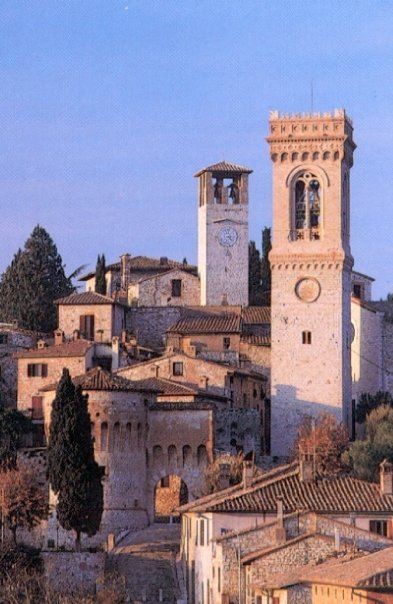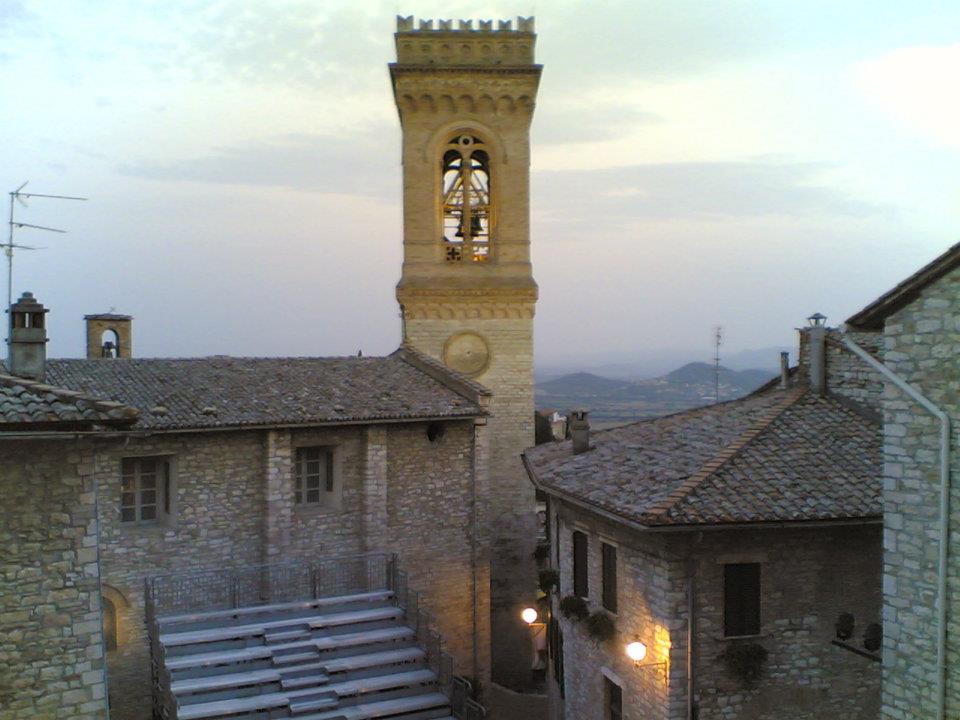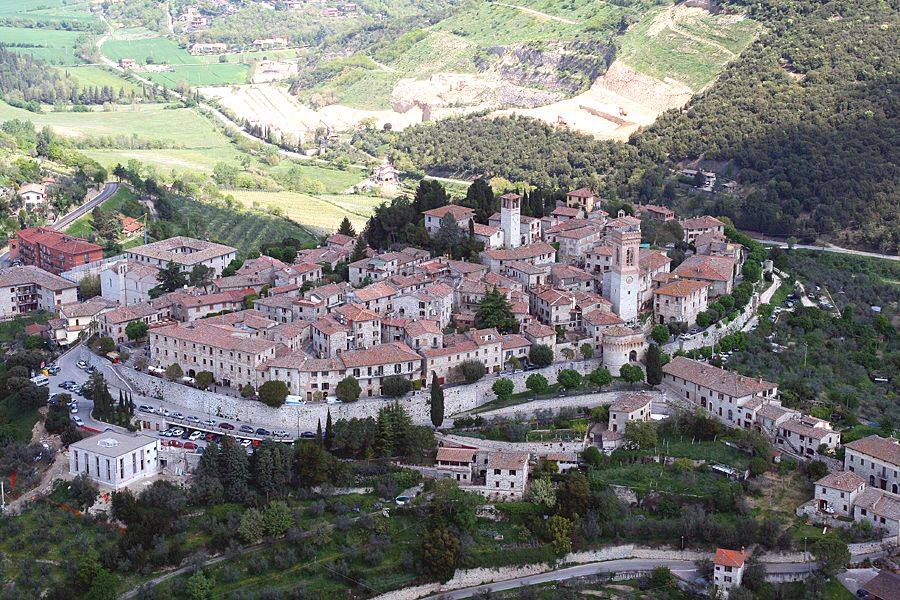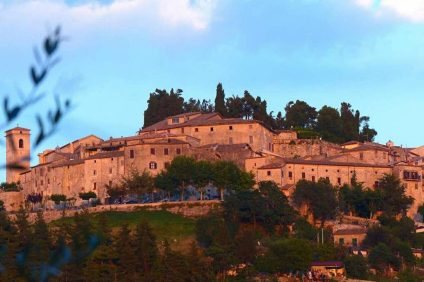Corciano is a magnificent village in the province of Perugia, located a few kilometers away between the city and Lake Trasimeno. It is considered one of the most beautiful medieval villages in Umbria, thanks to its historic centre, dominated by fascinating Renaissance buildings, churches and monuments of great artistic and architectural value. Its name comes from Latin curtius, referable to the owner of a rustic land. The town was officially mentioned for the first time in some documents from 1136, in which Pope Innocent II confirms to the Bishop of Perugia the presence of a "Castrum de Corciano".

The castle
About a kilometer from Corciano, on a hill overlooking the Caina valley, stands the castle of Pieve del Vescovo, surrounded by greenery. Built at the end of the XNUMXth century, it has a quadrilateral shape, delimited by four imposing cantonal towers. It owes its name to Cardinal Fulvio della Corgna, who was bishop of Perugia in the second half of the sixteenth century.

The noble palaces
Corciano stands on the top of a hill under which extends the valley that connects the Trasimeno area to the Tiber valley. The municipal tower stands out on the highest point of the village, while the castle, of medieval origin, is enclosed in a triple circle of walls. In its historic center, you can admire the Town Hall, from the XNUMXth century, which was the home of the Della Corgna dukes. Other historic buildings to visit are: the Palace of the Captain of the People, from the XNUMXth century, formerly the residence of the judiciary that administered Corciano on behalf of Perugia; The Palazzo dei Priori or della Mercanzia, from the XNUMXth century, formerly home to the city market; The Corgna Palace, built between 1560 and 1570, today the municipal seat. To the left of Piazza Coragino, you can see a circular well also from the XNUMXth century, in which the municipal coat of arms is carved.

The churches, historical heritage
The sacred buildings of Corciano represent the great historical heritage of the town. One of the most valuable churches in the village is the church and the adjoining convent of Sant'Agostino, founded in 1334 with a papal bull from Pope John XXII. Both underwent a radical restoration in the eighteenth century. It dates back to the XNUMXth century church of Santa Maria Assunta which houses a work by Perugino called “l'Assunta” and the Banner by Benedetto Bonfigli dated 1472. Also interesting is the church of San Cristoforo, from 1537, which today houses the Pievania Museum, where frescoes and sacred art objects are exhibited. Worth mentioning, they are also the church and the former convent of San Francesco , church of Santa Maria del Serraglio. Also noteworthy is the ancient “Hospital”, which preserves a fresco from 1494 attributed to Andrea d'Assisi known as Ingegno.

From the beauty of the woods to the excellent typical local products
The area surrounding Corciano is a green heart, made up of dense woods. There are several hiking trails which are enriched with small bodies of water called "Trosce" and hermitages surrounded by greenery. One of the most fascinating routes is the one that crosses the so-called Troscia del Melo. These large natural spaces are home to numerous plant and animal species. Typical local products are also very popular. One of them is the honey, which has received national and international recognition. Followed by saffron, ancient grains, land snail (with educational farm), oil (almost totally organic) and wine. The craft sector is also interesting. Among others, medieval wind instruments are made.
(Photo: Corciano (Pg); e-borghi; The most beautiful villages in Italy, Facebook pages)





